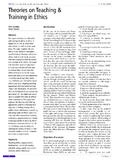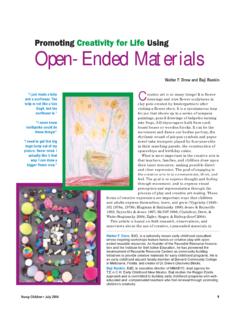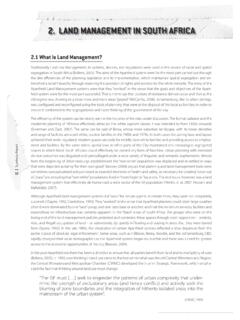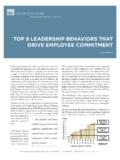Transcription of Engender ing Development - World Bank
1 Engendering Development A World Bank Policy Research Report Engendering Development Through Gender Equality in Rights, Resources, and Voice A copublication of the World Bank and Oxford University Press Oxford University Press OXFORD NEW YORK ATHENS AUCKLAND BANGKOK BOGOTA BUENOS AIRES. CALCUTTA CAPE TOWN CHENNAI DAR ES SALAAM DELHI FLORENCE HONG. KONG ISTANBUL KARACHI KUALA LUMPUR MADRID MELBOURNE MEXICO CITY. MUMBAI NAIROBI PARIS S O PAULO SINGAPORE TAIPEI TOKYO TORONTO. WARSAW. and associated companies in BERLIN IBADAN. 2001 The International Bank for Reconstruction and Development / The World Bank 1818 H Street, , Washington, 20433, USA.
2 Published by Oxford University Press, Inc. 198 Madison Avenue, New York, 10016. Cover credits: design, Joyce C. Petruzzelli and The Report Team; illustration, Tilly Northedge (Grundy & Northedge, London). Oxford is a registered trademark of Oxford University Press. All rights reserved. No part of this publication may be reproduced, stored in a retrieval system, or transmitted, in any form or by any means, electronic, mechanical, photocopying, recording, or otherwise, without the prior permission of Oxford University Press. Manufactured in the United States of America First printing December 2000.
3 1 2 3 4 5 03 02 01 00. The findings, interpretations, and conclusions expressed in this study are entirely those of the authors and should not be attributed in any manner to the World Bank, to its affiliated organizations, or to members of its Board of Executive Directors or the countries they represent. The boundaries, colors, denominations, and other information shown on any map in this volume do not imply on the part of the World Bank Group any judgment on the legal status of any territory or the endorsement or acceptance of such boundaries. Library of Congress Cataloging-in-Publication Data Engendering Development : through gender equality in rights, resources, and voice.
4 P. cm. -- ( World Bank policy research report). Includes bibliographical references. ISBN 0-19-521596-6. 1. Sex role--Developing countries. 2. Women in Development --Developing countries. I. World Bank. II. Series. E55 2001. '09172'4--dc21. Text printed on paper that conforms to the American National Standard for Permanence of Paper for Printed Library Materials, Contents Foreword xi Preface xiii The Report Team xv Acknowledgments xvii Summary 1. Gender Equality in Rights, Resources, and Voice 2. Despite Progress, Gender Disparities Remain in All Countries 3.
5 Gender Disparities Tend to Be Greatest among the Poor 6. Gender Inequalities Harm Well-Being, Hinder Development 8. Why Do Gender Disparities Persist? 13. A Three-Part Strategy to Promote Gender Equality 14. Challenges for the Future the Way Forward 26. 1. Gender Inequality at the Start of the 21st Century 31. Defining Gender Equality 34. Regional Patterns of Gender Inequality in Rights, Resources, and Voice 36. Patterns of Gender Inequality within Regions and Countries 59. Gender and Poverty 61. 2. Gender Inequality Hinders Development 73. Costs to Well-Being 74.
6 Costs to Productivity and Growth 83. Costs to Governance 92. Why Gender Disparities Persist: a Framework 97. Government's Role in Promoting Gender Equality 100. v ENGENDERING Development . 3. Social Norms, Laws, and Economic Institutions 107. Gender in Norms and Customs 109. Rights and Laws 113. Economic Institutions 124. Institutional Change: What Does It Take? 140. 4. Power, Incentives, and Resources in the Household 147. What Is a Household? 150. Households Reproduce Gender Roles 151. Resource Control and Bargaining Power Affect Household Allocations 154.
7 Policy Incentives and Public Investments Affect Gender Equality 165. 5. Is Economic Development Good for Gender Equality? 181. Breaking Down Rigid Gender Divisions of Labor 183. Strengthening Incentives for Equal Investments in Human Capital 192. Reducing Discrimination through Competitive Markets 196. Growth with Gender Equality: What Macro Studies Find 198. Do Development Paths Lead to Gender Equality? Regional Views 203. 6. A Three-Part Strategy to Promote Gender Equality 231. Reforming Institutions to Establish Equal Rights and Opportunities for Women and Men 235.
8 Fostering Economic Development to Strengthen Incentives for More Equal Resources and Participation 242. Taking Active Measures to Redress Persistent Disparities in Command over Resources and Political Voice 249. Challenges for the Future the Way Forward 271. Appendices 1. Notes and Country Coverage for Text Figures 277. 2. Basic Cross-Country Regression Model and Coefficient Estimates 297. 3. Relative Earnings of Women and Men Adjusted for Differences in Human Capital 301. 4. Empirical Tests of the Unitary Household Model 307. 5. Education Simulations 313.
9 Glossary of Terms in Figures 317. References 321. Index 359. vi CONTENTS. Boxes Measuring Gender Equality in Rights 38. Are Women Time Poor Relative to Men? 66. Establishing That Gender Equality Affects Economic Growth 89. Gender Norms Differ across Countries but Women and Men Agree More Often Than They Disagree 109. Land Rights of Women in Africa 122. The Glass Ceiling 126. Leveraging International Support to Promote Gender Equality 143. Factors Influencing Bargaining Power 155. Empirical Tests of the Unitary Household Model 157. Subsidizing Girls' Education: Evidence from On-the-Ground Experience 168.
10 Susu Collectors West Africa's Mobile Bankers 173. Computer Use and Women's Employment 189. A Nordic Model 204. Measuring Policy Impact 206. Cushioning the Effects of Reform on the Vulnerable 227. Budgetary Costs of Promoting Gender Equality in Primary Education in South Asia, Sub-Saharan Africa, and the Middle East and North Africa 256. Cost-Benefit Analysis of Selected Microfinance and Antipoverty Programs in Bangladesh 257. Gender-Appropriate Social Protection Means Attention to both Women and Men 265. Gender and the Design of Old-Age Security in Chile 266.















